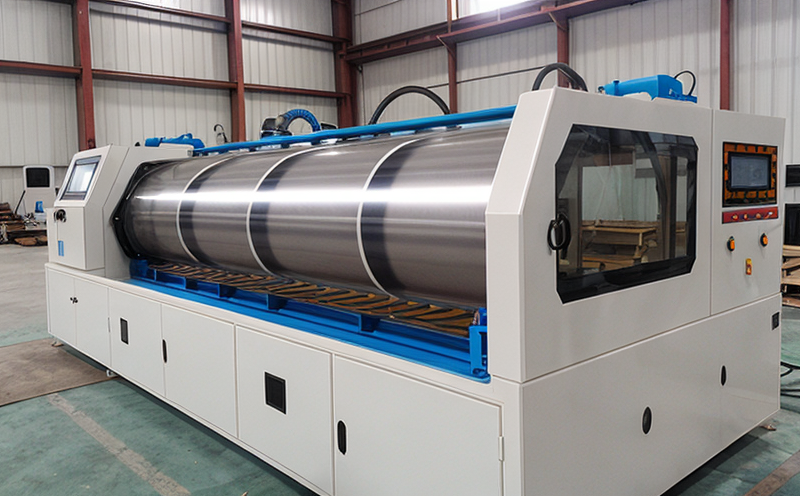GB T 24218.2 Tear strength of coated upholstery fabrics
The GB/T 24218.2 standard provides a detailed method to determine the tear strength of coated upholstery fabrics, which is crucial for ensuring the durability and quality of these materials in various applications. This test assesses how well the fabric can resist tearing under stress, which is essential for products like seat covers, cushioning pads, and other upholstered items that are subjected to significant mechanical stress over time.
The tear strength of upholstery fabrics is a key factor in determining their suitability for use in environments where they may be exposed to wear and tear. Factors such as the type of coating, base fabric, and finishing processes can significantly influence the tear resistance of these materials. Understanding the tear strength helps manufacturers ensure that their products meet safety standards and perform well under real-world conditions.
According to GB/T 24218.2, the test is conducted by subjecting a specimen to a specific type of tear stress, typically using a pendulum-like device that applies force in a controlled manner until it causes the fabric to tear. The standard specifies precise dimensions for the specimens and the conditions under which they are tested to ensure consistency across different laboratories.
The test results provide valuable insights into the durability of the coated upholstery fabrics, helping manufacturers make informed decisions about material selection and product design. It is particularly important in sectors where quality and safety are critical, such as automotive interiors, furniture manufacturing, and home textiles.
For R&D engineers working on innovative materials or new products, this test can be a valuable tool for evaluating the performance of experimental fabrics before they reach production stages. In compliance departments, it ensures that suppliers adhere to specified standards, while quality managers use the results to monitor product consistency over time and across different batches.
The tear strength test is just one part of the broader testing suite required for coated upholstery fabrics. Other tests might include water resistance, abrasion resistance, colorfastness, and flame retardancy, all of which are critical for ensuring the overall quality of the materials used in these applications.
Why It Matters
The integrity and durability of coated upholstery fabrics directly impact the longevity and safety of products that incorporate them. In environments where these fabrics are exposed to high levels of stress, such as automotive interiors or commercial seating, tear strength is a critical factor in ensuring the product's performance over time.
- Automotive Industry: Seat covers and cushioning pads need to withstand the weight and movement of passengers, as well as potential impacts during accidents. A fabric with poor tear resistance could lead to discomfort or even safety hazards.
- Furniture Manufacturing: Upholstered furniture should be able to endure daily use without tearing, especially in high-traffic areas where fabrics are more likely to come into contact with sharp objects or abrasive surfaces.
- Home Textiles: Bedding and other home textiles that incorporate coated upholstery fabrics must maintain their integrity through regular washing and handling. Poor tear resistance could lead to premature replacement of the products, impacting customer satisfaction.
In summary, the GB/T 24218.2 test is vital for ensuring that coated upholstery fabrics meet the required standards in terms of durability, which ultimately contributes to safer and more reliable end products.
Scope and Methodology
The scope of this standard covers the determination of tear strength in coated upholstery fabrics. The method described herein is applicable to a wide range of coated fabrics used in upholstery applications, including those with various types of coatings such as PVC, polyurethane (PU), and silicone.
The test procedure involves preparing specimens according to specified dimensions and then subjecting them to a controlled tear stress using a pendulum-like device. The force required to cause the fabric to tear is recorded, providing a quantitative measure of the tear strength.
Key aspects of specimen preparation include ensuring that the coating layer is intact and that the edges are free from defects or irregularities. This ensures accurate results by preventing factors other than the inherent properties of the fabric itself from influencing the test outcome.
The methodology also includes considerations for environmental conditions, such as temperature and humidity, which can affect the performance of coated fabrics. It is important to conduct tests under controlled conditions to ensure that the results are consistent and reliable.
Use Cases and Application Examples
- Automotive Seating: Ensuring that seat covers and cushioning pads have sufficient tear strength is crucial for passenger safety and comfort. A fabric with poor tear resistance could lead to discomfort or even tears during accidents.
- Furniture Design: Upholstered furniture, especially in public spaces like hotels and restaurants, must be durable enough to withstand frequent use and exposure to environmental factors such as sunlight and moisture.
- Hospital Furniture: In healthcare settings, the durability of upholstery fabrics is critical for maintaining a clean and hygienic environment. Fabrics that tear easily could lead to increased maintenance costs and potential health risks.
- Public Transport Seats: The seating in public transport vehicles must be robust enough to withstand the rigors of daily use by large numbers of passengers. A fabric with adequate tear strength is essential for maintaining a high standard of service.
The GB/T 24218.2 test provides valuable data that can inform decisions about material selection and product design, ensuring that coated upholstery fabrics meet the necessary durability standards in various applications.





